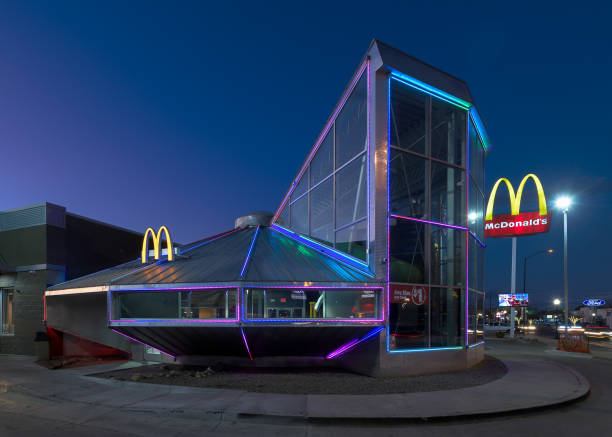
As a global leader in the fast-food industry, McDonald’s aims to secure its future success through well-defined long-term financial goals. These goals are designed to ensure sustained growth, enhance shareholder value, and maintain the company’s competitive edge. This article explores McDonald’s long-term financial strategies and objectives.
Driving Revenue Growth
Expanding Market Presence
One of McDonald’s primary financial goals is to expand its market presence globally. By entering new markets and strengthening its position in existing ones, McDonald’s aims to drive revenue growth.
Expansion Strategies:
- Emerging Markets: Targeting emerging markets such as Asia, Africa, and Latin America to tap into their growing middle-class populations.
- Franchise Model Expansion: Increasing the number of franchised locations to reduce capital expenditure and leverage local entrepreneurs’ expertise.
- Urban and Suburban Growth: Expanding in both urban centers and suburban areas to capture diverse customer demographics.
Menu Innovation
Innovating the menu to meet changing consumer preferences is crucial for driving revenue growth.
Menu Strategies:
- Healthier Options: Introducing more health-conscious menu items, including plant-based and low-calorie options.
- Local Flavors: Incorporating local and regional flavors to cater to diverse tastes.
- Limited-Time Offers (LTOs): Regularly launching LTOs to create excitement and drive traffic to restaurants.
Enhancing Profitability
Cost Management
Effective cost management is essential for enhancing profitability. McDonald’s focuses on optimizing its operations to reduce costs without compromising quality.
Cost Management Strategies:
- Supply Chain Efficiency: Streamlining the supply chain to reduce costs and improve efficiency.
- Automation and Technology: Investing in automation and technology to enhance operational efficiency and reduce labor costs.
- Sustainable Sourcing: Implementing sustainable sourcing practices to ensure long-term cost savings and stability.
Maximizing Franchise Income
Maximizing income from franchised locations is a key component of McDonald’s profitability strategy.
Franchise Strategies:
- Franchise Support: Providing comprehensive support and training to franchisees to ensure operational excellence.
- Performance-Based Incentives: Implementing performance-based incentives to encourage franchisees to achieve higher sales and profitability.
- Franchise Expansion: Encouraging existing franchisees to open additional locations.
Increasing Shareholder Value
Dividend Growth
Consistent dividend growth is a priority for McDonald’s as it aims to provide reliable returns to shareholders.
Dividend Strategies:
- Stable Payout Ratio: Maintaining a stable dividend payout ratio that balances rewarding shareholders and reinvesting in the business.
- Dividend Increases: Committing to regular dividend increases in line with earnings growth.
Share Buybacks
Share buybacks are another strategy McDonald’s employs to enhance shareholder value.
Buyback Strategies:
- Regular Buybacks: Implementing regular share buyback programs to reduce the number of outstanding shares and increase earnings per share (EPS).
- Market Conditions: Timing buybacks based on favorable market conditions to maximize the impact on shareholder value.
Ensuring Financial Stability
Strong Balance Sheet
Maintaining a strong balance sheet is critical for McDonald’s long-term financial health.
Balance Sheet Strategies:
- Debt Management: Managing debt levels to ensure a healthy balance sheet and maintain investment-grade credit ratings.
- Cash Reserves: Maintaining adequate cash reserves to support operations and strategic investments.
- Prudent Investment: Making prudent investments in growth opportunities while maintaining financial discipline.
Risk Management
Effective risk management is essential for ensuring financial stability in the face of uncertainties.
Risk Management Strategies:
- Diversification: Diversifying revenue streams across different markets and product lines to mitigate risks.
- Hedging: Using financial instruments to hedge against currency fluctuations and commodity price volatility.
- Regulatory Compliance: Ensuring compliance with regulatory requirements to avoid legal and financial penalties.
Embracing Sustainability
Sustainable Growth
McDonald’s long-term financial success is closely tied to its commitment to sustainability.
Sustainability Strategies:
- Environmental Initiatives: Investing in environmental initiatives such as reducing carbon emissions, conserving water, and minimizing waste.
- Sustainable Sourcing: Committing to sustainable sourcing practices to ensure long-term supply chain stability and cost savings.
- Community Engagement: Engaging with communities to build a positive brand image and ensure long-term customer loyalty.
Corporate Social Responsibility (CSR)
Integrating CSR into McDonald’s financial strategy is essential for aligning business objectives with social and environmental responsibilities.
CSR Strategies:
- Ethical Practices: Upholding ethical business practices to build trust with stakeholders.
- Social Impact: Investing in social impact programs that benefit employees, customers, and communities.
- Transparency: Maintaining transparency in reporting financial performance and sustainability efforts.
FAQs
What are McDonald’s primary long-term financial goals?
McDonald’s primary long-term financial goals include driving revenue growth, enhancing profitability, increasing shareholder value, ensuring financial stability, and embracing sustainability.
How does McDonald’s plan to drive revenue growth?
McDonald’s plans to drive revenue growth by expanding its market presence, innovating its menu, and launching limited-time offers to attract customers.
What strategies is McDonald’s using to enhance profitability?
McDonald’s is enhancing profitability through effective cost management, maximizing franchise income, and investing in automation and technology to improve operational efficiency.
How does McDonald’s aim to increase shareholder value?
McDonald’s aims to increase shareholder value by committing to consistent dividend growth, implementing regular share buyback programs, and maintaining a strong balance sheet.
What role does sustainability play in McDonald’s financial strategy?
Sustainability is integral to McDonald’s financial strategy, with initiatives focused on environmental responsibility, sustainable sourcing, and corporate social responsibility to ensure long-term growth and stability.
Conclusion
McDonald’s long-term financial goals are designed to secure future success by driving revenue growth, enhancing profitability, increasing shareholder value, ensuring financial stability, and embracing sustainability. By implementing these strategies, McDonald’s aims to maintain its position as a global leader in the fast-food industry and deliver sustained value to its shareholders and stakeholders. These goals reflect McDonald’s commitment to innovation, operational excellence, and responsible business practices, ensuring a prosperous future for the company.